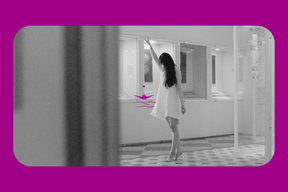How Can Dance Support Our Sexual Challenges?
Nowadays, many of us have experienced sexual trauma. Growing up in a society where sexuality is taboo and forbidden, even if we haven’t been directly assaulted, we may have been wounded by the attitudes of our families or our environment. In fact, I believe that the prevalence of sexual harassment is far higher than generally assumed. One way or another, we’ve been hurt.
Following this pain, our relationship with sexuality never quite formed in a way that feels like our own. Beyond the shame and guilt, even those of us who reject these notions and long for a healthy connection with our sexuality find it difficult. The body doesn’t forget; it continues to live out the old story and the wounding.
Our bodies manifest this in various ways, from menstrual issues to emotional blockages, triggers, anxiety, pain, nausea, and spasms. It’s as if the body is telling us, “Yes, you’re here now, in the present, and no danger exists, but I’m still triggered.” You haven’t yet soothed the old story or fully digested what has happened.
What makes it worse is that, in this society, sexual abuse is often swept under the rug. The burden grows heavier under the weight of secrecy and suppression.
Unresolved, unregulated experiences from the past affect our present far more than we realize. This is why seeking support from professionals is always a good idea.
It’s crucial to find the resolution for the body’s wounding by involving the body itself. This is where dance, with its tribal and artistic roots, can step in.
The core issue stems from touch and the memory of touch, so starting to touch our bodies through dance—teaching it a new language—can bring about incredible results. When the body chooses to freeze within the unbearable pain, dance offers a gentle way to awaken it again. Finding simple ways to reconnect with our bodies, learning what it loves and what it doesn’t, and gradually opening the doors to our creativity can ease our process.
Somatic practices are becoming increasingly integrated into the field of psychology. We are starting to realize that trying to understand a person without considering the body—a major part of them—is illogical, and that the body offers significant insight into our psychological state.
And if our body reflects our psychology, then through this reflection, we can touch our psyche. Through the body, we can access our mood, the remnants of our memories, the places within us that bear scars, and heal them. Sometimes the mind cannot interpret these things or comprehend what is happening, but something still shifts within the body, and we know that something is happening.
Dance allows the body to heal and cleanse itself. Through movement, we can better see the blocked areas and, using certain techniques, find ways to flow through them.
Particularly dances that involve the pelvis can be supportive. The pelvis, as the center of our sexual energy, can reawaken those areas we’ve blocked through swaying and trembling motions. Allowing the body to activate itself by surrendering to the music is one of the best methods we can embrace.
If we find it difficult to do this alone, we can join a group, attend a concert or a wedding. In spaces where everyone is immersed in dance, we can adapt more easily.
Even going to a techno party and dancing by stomping our feet can be effective.
Rather than directly addressing the issue, I find it most healing to circle around it with dance and gently open doors to release. From my experience, dance is a form of “making love.”
In the midst of dance, we can also make love to the music and our emotions…


